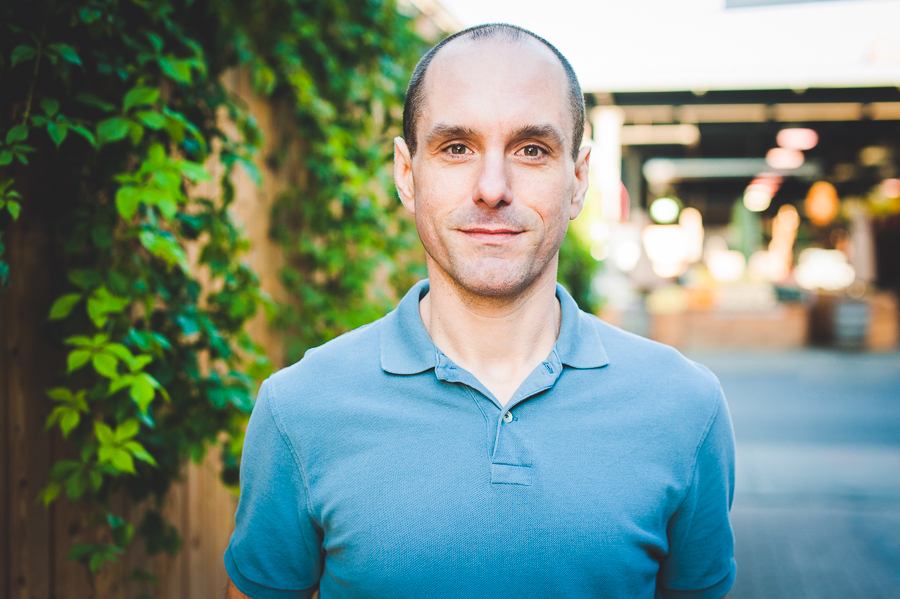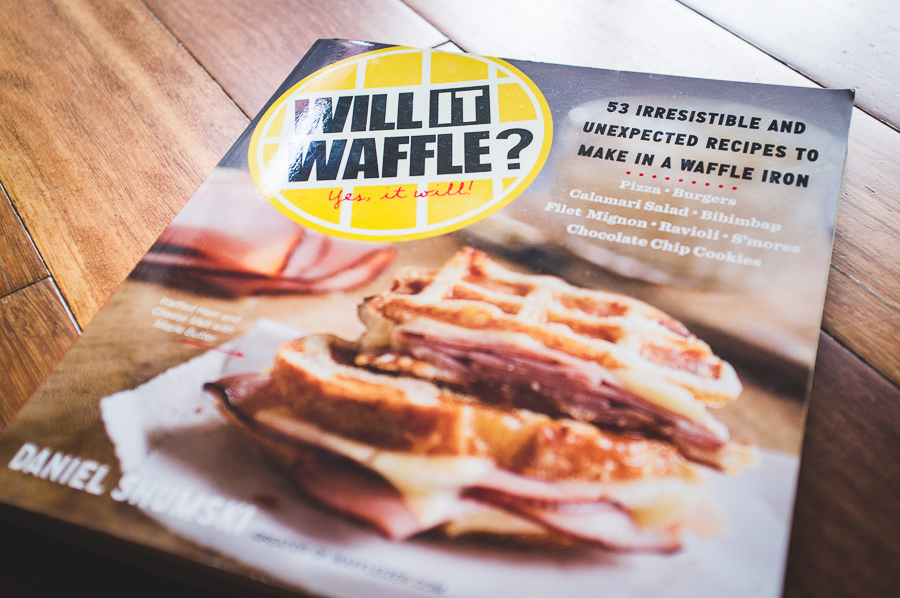Marie contacted me for a few promotional portraits for her upcoming website and blog. She’s currently working in an architecture firm, but the website’s going to be about video games.
Case Study 02 | Portrait in Jean-Talon Market
Background:
For this case study we’re going into a more typical portrait assignment. Daniel Shumski contacted me a few months ago. He’s a food and travel writer, and the author of the fun and adventurous cookbook Will it Waffle?: 53 Irresistible and Unexpected Recipes to Make in a Waffle Iron (more on that later, including photos of something exciting we tried recently). Daniel asked for a few portraits to promote his next special cookbook.
Project description:
A portrait with natural-looking light in a setting that suggests food, without being too explicit or obvious.
Process and planning:
We brainstormed locations, and after ruling out cafés, grocery stores, and kitchens, we decided to go for portraits in a market. Jean-Talon Market came out as the winner, since a quick Google Streetview walk in the Atwater Market revealed big poles between each stand that would be hard to work around. Jean-Talon Market is also much larger and has more alleys for us to shoot in (and it has a better selection of produce with lower prices!).
We created a mood board on a Google Doc and initially wanted Daniel to carry one of those paper grocery bags with some baguettes, but after seeing so many hilarious and cheesy stock photos of that, we decided to drop the idea.
Then the next thing was just to find a time to shoot when 1) the stands had fruits on them and 2) the market was not too crowded. Wednesday at 7AM it is.
Result:
This ended up being my favourite shot. I like the soft backlight. I think the subtle background, with its blurry shapes and colours, gives our brains just enough hints that the setting is a market, without explicitly screaming MARKET MARKET MARKET. You see the picture and you think Hey. This guy looks like he knows a thing or two about food. I wanna buy a cookbook from him.
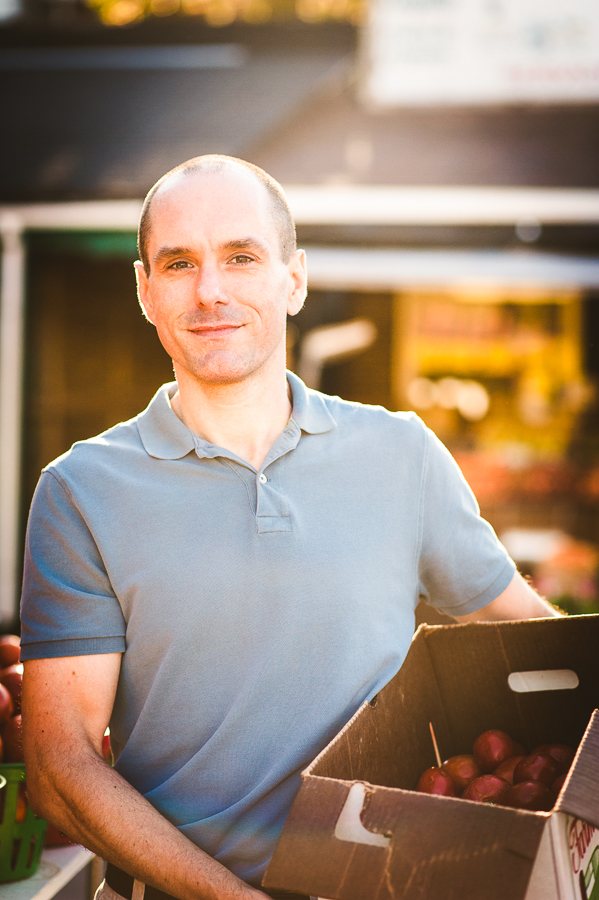
Take-home messages:
- Staged photos - When you stage a shot, the BIGGEST challenge in my opinion is to not make it look staged. For my Montreal Artists, I ask all of them to actually DO work. I tell them beforehand to make sure they have something to work on. If they “pretend draw”, it’ll look stiff. I get my best results by letting them draw, looking and waiting and capturing the moments where the movement looks fluid. In Daniel’s case, I told him to actually walk through the aisles, go up to the stands, pick out some fruits, and so when I’d say “Now look up to the camera”, he just needed to turn his head towards the camera and his body would already look natural.
- Photos in public - I’m always aware of people around us when photographing my subjects in public. Of course, I don’t want to include people in the background of my shots that shouldn’t be there, but more importantly, it can be extremely distracting for subjects to be photographed in front of others. People passing by will naturally be curious and will stare. Even when they’re not IN the shot, I’ll wait for them to walk past us before lifting my camera up. So bottom line: make sure privacy is one of the considerations when choosing locations and time of shooting, and be aware of the people around you and your subject when you're taking portraits in public.
Waffle Time!
OK check this out. Claudia and I wanted to try something fun from Will it Waffle? and we went for Waffled Onion Rings :O ! Of course in a waffle iron, the result won’t look like a typical onion ring, but this recipe kept the essence of onion rings with the same delicious taste and crunch.
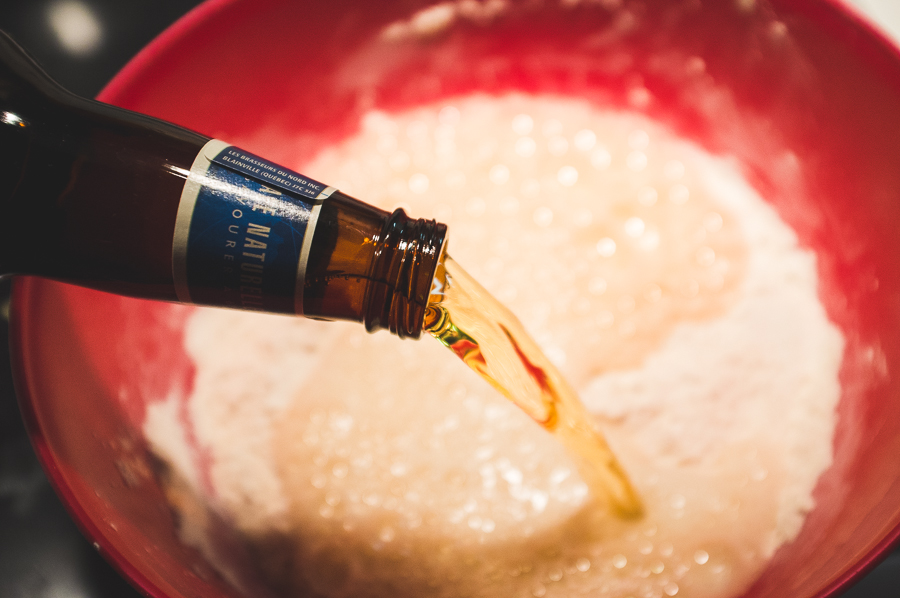
Beer batter!

The result was delicious waffled onion rings (this piece was part of a giant ring) with a little spicy mayo dip we made. (The next recipe we'll tackle will be the Waffled Hashbrowns with Rosemary.) If you want to try it out these fun adventurous recipes yourself (or order it for someone - Will it Waffle? + a waffle iron does sound like a great gift idea), check out the link here. I'm looking forward to whatever Daniel is cooking up next!
Thanks for reading! Keep up with these blog posts by following my Facebook page.
Case Study 01: Staff Headshots for Macdonald Campus
This is the first of potentially many more client case studies. (I’m re-shuffling my blog categories around as there’s some upcoming remodelling of my website and blog!) For these case studies, I’ll focus less on the story of my subjects and more on the assignment itself, the photography, and the logistics. The first one here features the staff headshots I took for McGill’s MacDonald Campus. This could be useful for prospective clients and fellow photographers / freelancers.
Background:
When the new Dean joined the Macdonald Campus of McGill University in Ste-Anne de Bellevue, she led a charge to revitalize the faculty website. I still remember applying to grad school years ago, browsing through dozens of webpages of professors from different universities and comparing them. For many professors, their page was my first impression of them. Here’s what the website looked like before the intervention:

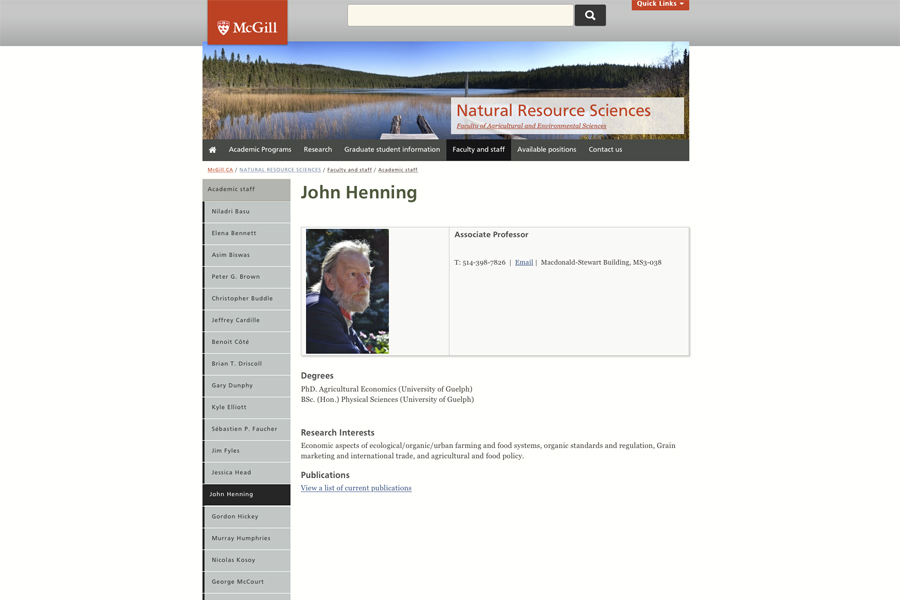
Because all photos were staff-submitted, there was no consistency among photos. Most photos were of very low-quality, and many had poor lighting. Some staff members were even unrecognizable, either due to the photo quality or because the photo was simply very outdated.
Description of the assignment:
Update the faculty and staff headshots for the Faculty of Agriculture and Environmental Sciences of McGill University (5 departments: 120 professors and non-academic staff). Requirements for the headshots: consistent in style, composition, and quality, with a variety of different out of focus backgrounds.
Challenge #1: Professors are extremely busy people.
Most professors were extremely busy. We therefore had to create a very strict shooting schedule, where each subject had a designated 10-min time slot. I knew that I wouldn’t even be given 10 minutes from each of my subjects, so my aim was to work as fast as possible. I was able to photograph many subjects in less than two minutes (and sometimes, I wasn’t given a choice). In an ideal world, my subjects would have more time with me and would all be excited with the idea of being photographed, but I understand that it’s not possible when you have 120 busy people. I made sure that my camera equipment was ready to go before my subject arrived, I constantly kept checking how the sunlight changed, and I made sure to greet them all subjects with a warm welcome - I only had a few seconds to get them to be comfortable with me!
Tips: If you have time-sensitive subjects and need to work very quickly, plan and scout locations beforehand (this should be part of your work and in your contract). I pre-selected several locations and noted down the optimal times of day for best lighting and I also paid attention to the amount of student traffic that each location had. When so many busy schedules are at stake, plan very carefully and prepare contingency plans in case of bad weather, people showing up late, and people not showing up at all. A single subject arriving late can trigger a domino effect. Run different scenarios in your head and decide beforehand what you will do if it happens. Make sure your contract addresses the possibility of these issues if necessary.
Challenge #2: Multiple stakeholders in the assignment.
In a typical headshot session, the person controlling the budget, the person being photographed, and the person I communicate with are all the same person. For this assignment, my client was split in three: 1) the Dean (who had a vision for the project and took budget decisions), 2) the 120 subjects to be photographed, and 3) the contact person (my only direct contact throughout the planning). Situations like this can create potentially competing interests among the three client heads.
Tips: Any time your client is split into multiple parties and stakeholders, you have to be extra alert with your communications, making sure that the important information is passed down to the relevant people. When interests compete, understand whose decisions you should be following, and manage expectations as best you can.
Result:
The new portraits have been added on the website. (Some of the staff could not be photographed, so their pages remain as before unfortunately.) The new staff headshots result in a more professional look in my opinion. More importantly, the people who hired me are happy with the results!
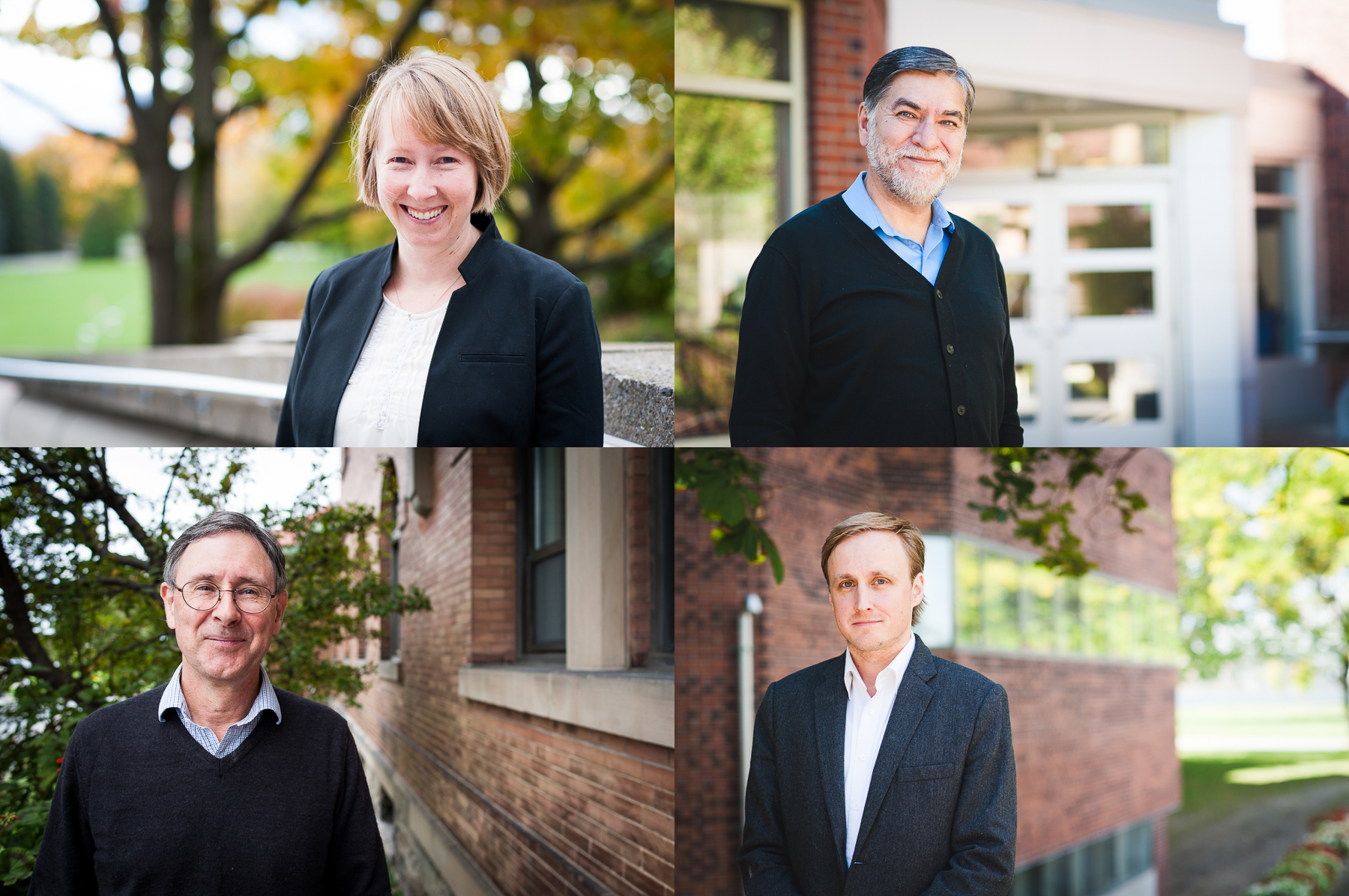
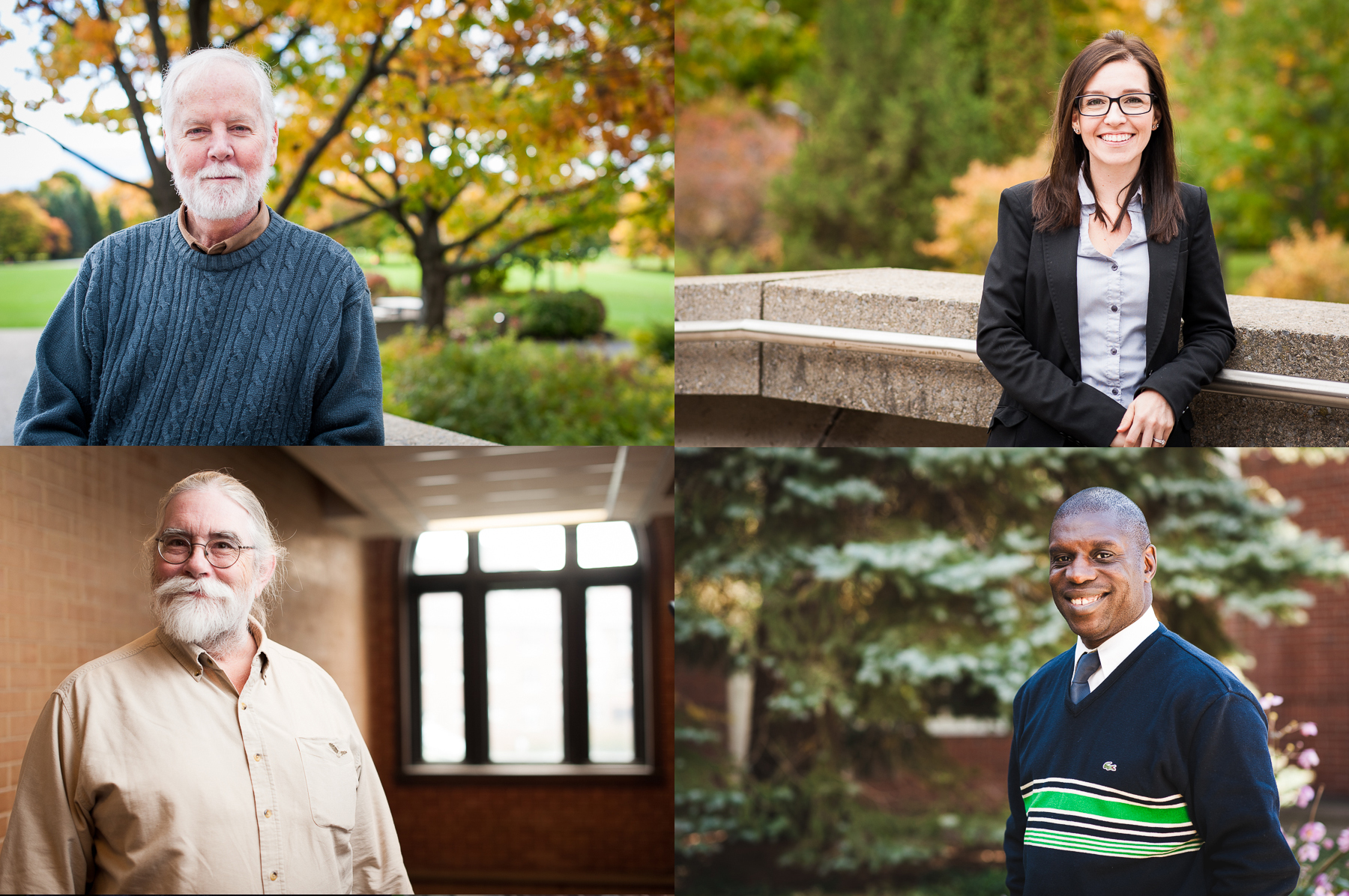
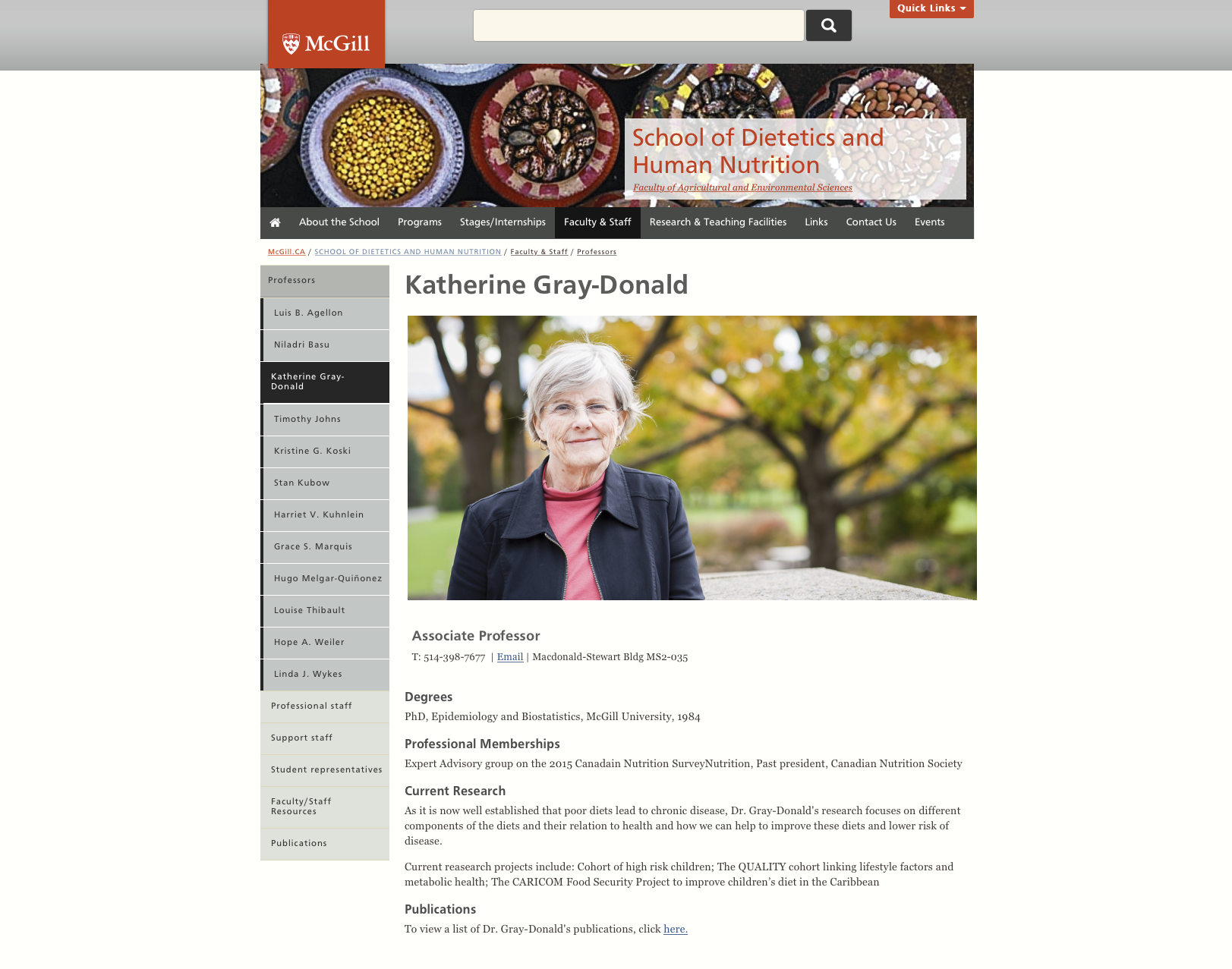
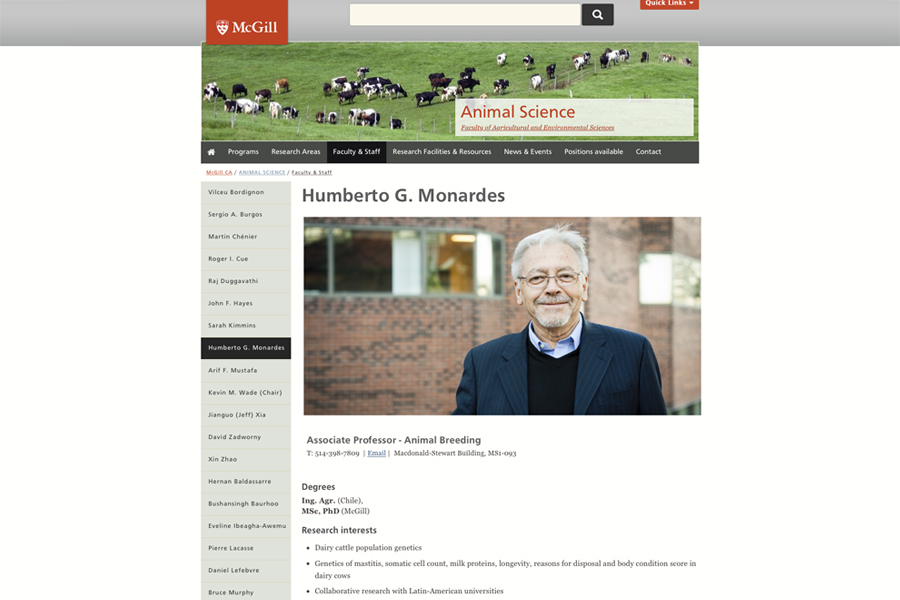
Take-home messages:
- When you only have a few seconds with each subject, make sure you do everything you can before the subject arrives (prepare equipment, scout before). Make sure you're also ready mentally. You have only a few seconds to make an impression, to get them to trust you, and to create a good headshot.
- When you have assignments that have multiple stakeholders, make sure you're on point with your communication with everyone, anticipate any competing interests, and know whose requests to give priority to. Understanding each stakeholder's point of view will make it easier to explain clearly your inability to fulfill all requests.
- Make sure your contract covers everything! Don't just think about the photography, think of what happens before and after a shoot and the amount of time you're putting in different tasks such as planning, scouting, delivering images, creating galleries, etc.
Thanks for reading! If you find this kind of stuff interesting to read, the best ways to keep up with my latest posts is to either RSS my blog, Like my public Facebook page, or signup to my photo newsletter below.


